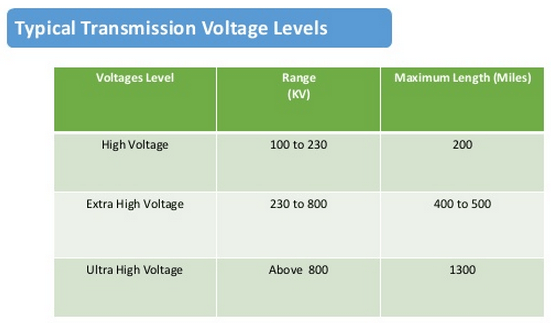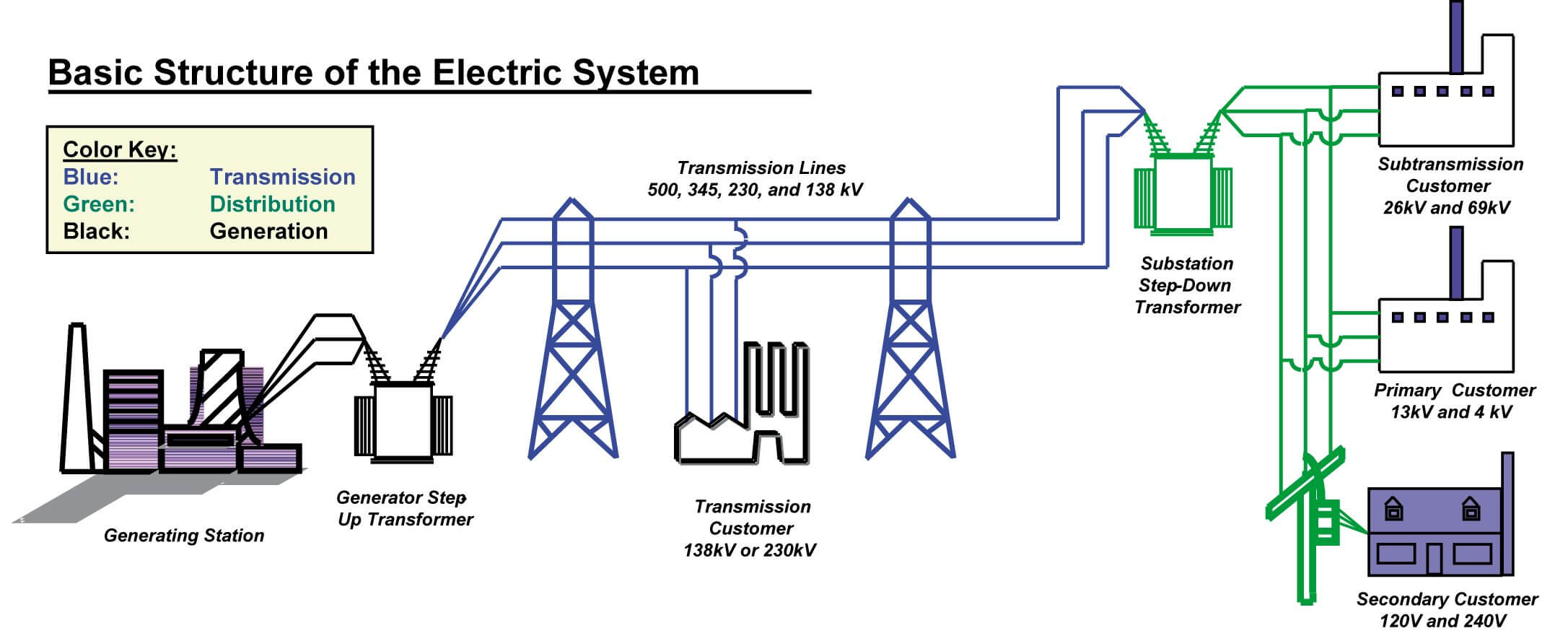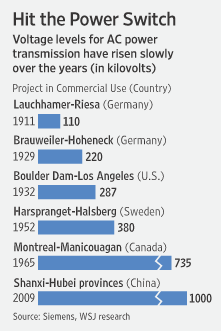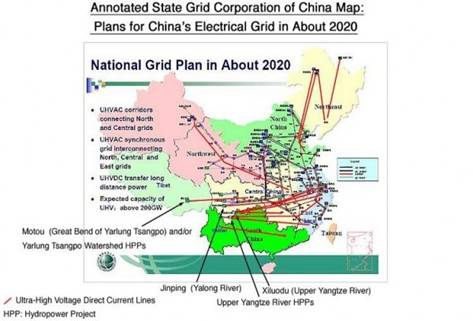 Author: Alan Novak, Mining and Power Industries Director
Author: Alan Novak, Mining and Power Industries Director
Ultra-High Voltage (UHV) transmission refers to power transmission lines operating at greater than 800,000 volts (800 kV).
For reference, most transmission lines in the United States operate at voltages less than 395kV.

Source: Concept of energy transmission & distribution (slide 17), ZunAib Ali (51 SlideShares) , Electronic Engineer at Uet Peshawar, Pakistan

Source: Iowa State University, Homepage for EE/Econ 458 (Tesfatsion), Economic Systems for Electric Power Planning
The primary benefit of UHV transmission is the ability to transport electricity over long distances with minimal power loss. While there have been advances over the years, adoption has been relatively slow:

Source: Wall Street Journal, Going the Distance
As noted above, China is the first to employ 1,000,000 Volt (1,000 kV) transmission lines and has begun an aggressive plan to interconnect major provinces with UHV lines. As noted in a recent Forbes article, Ultra-High Voltage Transmission Can Break China’s Cycle Of Energy Dependence, China has already demonstrated transmission at distances of 2,500 km, with lines up to 5,000 km being planned.

Source: Global Energy Network Institute, China Completes Cross-Border Power Transmission Project With Russia
China is also exporting this expertise and working with companies such as Electrobras in Brazil to build a 2,000 km 800kV line which will transport hydroelectric power from northern Brazil to population centers in the south.
So why build a UHV transmission system? UHV allows generating plants to be moved closer to the fuel source and away from population centers, significantly improving local air quality. A secondary benefit is the ability to integrate widely dispersed renewable power sources (hydro, wind, and solar) into a national distribution network.
Only time will tell if UHV is the future for power transmission systems.






